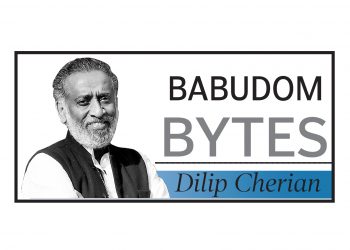When the Modi sarkar unveiled its lateral entry scheme in 2018, it promised to shake up the ossified steel frame of Indian governance with an injection of fresh ideas and outside expertise. The pitch was seductive: cut through the red tape by bringing in private-sector professionals who had navigated markets, managed scale, and thought beyond the dusty rulebooks of North Block. Seven years later, the scheme finds itself in limbo, more a footnote in babu chatter than the revolution it once claimed to be.
The reasons are hardly mysterious. For one, the government stumbled headlong into the reservation debate. By defining lateral entry posts as “single-post cadres” and therefore outside the ambit of constitutional quotas, it invited criticism of bypassing affirmative action. Politically, that was never going to fly. Instead of addressing it head-on—say, by designing a transparent system of reserved slots—the government blinked, quietly withdrawing advertisements for 45 posts last year and pretending it was all part of a grand re-think.
Then there’s the talent pool problem. Rather than attracting the best of India’s boardrooms, applications have disproportionately come from PSU mid-managers keen to stay in Delhi. Add to that a salary structure pegged to government scales, which is far below what senior private-sector leaders command. The only people willing to take the plunge are those who view it as a lifestyle move, not a national calling.
Even for those who did make it in, the experiment was underwhelming. Experts hired for their domain knowledge found themselves lost in the labyrinth of file notings and procedural niceties, their skills underused. Innovation can’t flourish when you’re reduced to navigating the same bureaucratic sludge as career civil servants.
What was meant to be a bold reform now appears to be yet another committee-bound exercise, caught between the imperatives of social justice, the realities of compensation, and the unwillingness to redefine roles. Unless the government creates a distinct lateral track with clear mandates, competitive pay, and built-in accountability, this scheme will remain exactly what it is today.
Urjit’s curious comeback
The irony is rich. Urjit Patel, the Reserve Bank Governor who famously walked away mid-term in 2018, citing “personal reasons” while everyone whispered “government interference,” is now India’s man at the International Monetary Fund. The very establishment that once bristled at his autonomy streak has wheeled him back into the spotlight, this time with a global microphone.
This isn’t just about Patel. It’s about India’s shifting calculus on credibility. In a world where IMF boardrooms are weighing debt distress in Sri Lanka, precarious reserves in Bangladesh, and the fiscal overhang of climate finance, New Delhi seems to have decided that reputation trumps resentment. Patel, with his inflation-targeting discipline and IMF pedigree, offers both gravitas and a familiar technocratic face.
But the backstory matters. His 2018 resignation was the first time in decades that a sitting RBI Governor quit abruptly, sparking debates about the Centre’s overreach. Shaktikanta Das’s smooth succession only deepened suspicions of a “yes-man” preference. Fast forward to today, and Patel’s quiet rehabilitation raises uncomfortable questions: has the government truly come to value institutional independence, or is this simply a case of redeploying a skilled insider abroad, where his autonomy won’t sting quite as much?
Whatever the answer, the signal to the international community is clear: India is fielding a heavyweight at the IMF table. For Patel, it’s a redemption arc. For the Centre, it’s a test of whether it can project technocratic credibility abroad while still wrestling with political interference at home.
Sometimes, the louder message lies not in the appointment itself, but in the contradictions it quietly papers over.
The lone whistle in the Himalayas
In Uttarakhand, where every monsoon brings fresh reminders of the Himalayas’ fragility, the real story isn’t just about a few illegal eco huts tucked away in Munsiyari. It’s about the one man who refused to look away. Sanjiv Chaturvedi, Chief Conservator of Forests, has once again done what few babus dare—call out wrongdoing in black and white, no matter how powerful the players involved.
Chaturvedi is not new to this. A Magsaysay Award winner, he has made a career out of exposing corruption, whether it was in AIIMS or the Haryana Forest department, often paying the price through transfers, inquiries, and isolation. In Munsiyari, he flagged how rules were bent, approvals bypassed, and public revenue siphoned off under the guise of eco-tourism. More importantly, he named names and demanded real accountability, urging nothing less than CBI and ED investigations. That takes courage in a system where blowing the whistle often means blowing up your own career.
Interestingly, the Centre only stirred into action after his report landed on desks, ordering the state forest department to prosecute those responsible. Without Chaturvedi’s doggedness, the issue would likely have been buried under the usual rubble of “development” projects.
By Dilip Cherian

